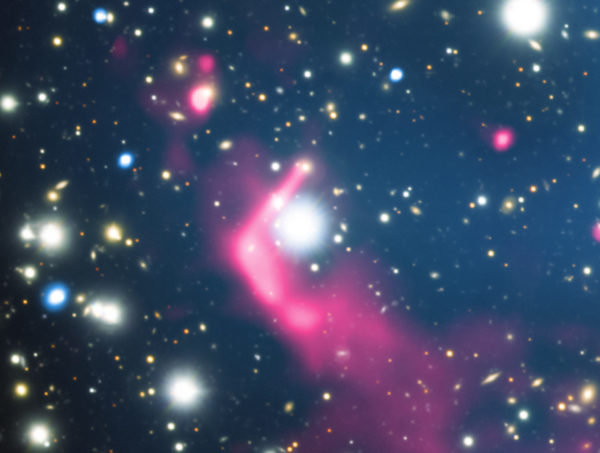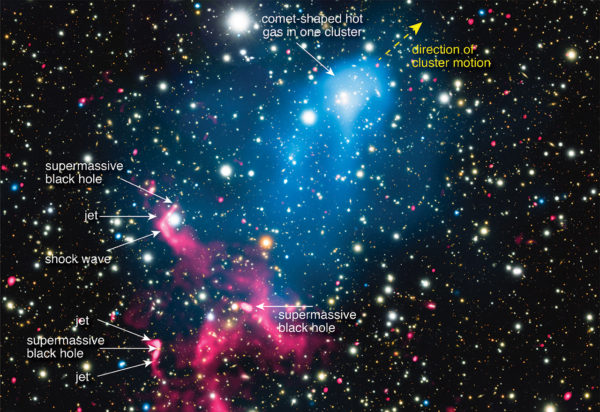"Speculating and predicting what lies beyond the boundary is fascinating. Finding out is even more fascinating." -Wallace H. Tucker
When two galaxy clusters collide, there are a slew of cosmic certainties you can bet on: all the galaxies will miss one another, the intracluster gases will collide and heat up, and X-rays will be emitted. But on rare occasion, radio emission can be found, too. Which is a puzzle, since that requires electrons to gain an extra factor of 1,000,000 in energy! How can that happen?
 The most energetic shock can be clearly seen around one of the galaxies, well-offset from the X-rays' peak intensity. Image credit: X-ray: NASA/CXC/SAO/R. van Weeren et al; Optical: NAOJ/Subaru; Radio: NCRA/TIFR/GMRT.
The most energetic shock can be clearly seen around one of the galaxies, well-offset from the X-rays' peak intensity. Image credit: X-ray: NASA/CXC/SAO/R. van Weeren et al; Optical: NAOJ/Subaru; Radio: NCRA/TIFR/GMRT.
Up until recently, it was a mystery, but a new colliding cluster, Abell 3411 and 3412, has shown something incredible: gas shocks on the outskirts of the X-ray collisions appear to get a blast from nearby, active supermassive black holes, giving the electrons the needed boost and creating those energetic electrons after all!
 A multiwavelength, annotated view shows the supermassive black holes and jets that have been activated by the collision. Image credit: X-ray: NASA/CXC/SAO/R. van Weeren et al; Optical: NAOJ/Subaru; Radio: NCRA/TIFR/GMRT.
A multiwavelength, annotated view shows the supermassive black holes and jets that have been activated by the collision. Image credit: X-ray: NASA/CXC/SAO/R. van Weeren et al; Optical: NAOJ/Subaru; Radio: NCRA/TIFR/GMRT.
Go get the full story in pictures, videos and no more than 200 words on today’s Mostly Mute Monday!
